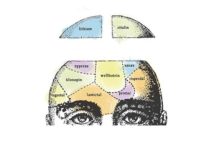A new study, published in Schizophrenia Research, examined the relationship between childhood adversity, hearing negative voices, and individuals’ level of distress. Dr. Cherise Rosen and a team of researchers found that the content of voices heard is a crucial piece that explains why childhood adversity leads to distress. These results point toward the use of trauma-focused interventions to change voice content.
“This study aimed to test the hypotheses that levels of childhood adversity would predict levels of negative voice-content, and that negative voice-content would partially mediate a relation between childhood adversity and voice-related distress,” the researchers write.

Approximately two-thirds of people with a schizophrenia-related diagnosis will experience hearing voices in the absence of an external stimulus, or what some refer to as “voice hearing.” Hearing voices does not necessarily lead to distress, nor does it necessarily indicate a problem in functioning. Therefore, researchers have explored the following question: “Why do some voice hearing experiences lead to distress or dysfunction while others do not?”
Research suggests that it is the content of voices that leads to experiencing distress or dysfunction. When voices have a negative valence, meaning that they are critical, abusive, threatening, or shaming, a person is much more likely to receive a schizophrenia diagnosis and become a psychiatric patient.
A building amount of evidence also demonstrates that people who have experienced childhood abuse and adversity are more likely to hear voices with negative content (see MIA report). One study found that 94% of voice hearers could trace their voices back to overwhelming emotional events of their past.
Cognitive models of conceptualizing voice hearing stress that one’s beliefs about their voices determine the distress they experience. One study outlined this belief by writing: “it’s not what you hear, it’s the way you think about it.” This has led to clinical interventions that focus on changing one’s beliefs about their negative voices. Rosen and colleagues explain:
“While addressing the link between appraisal processes and distress is an important clinical task, the focus on hearers’ beliefs about their voices has drawn attention away from the role voice-content itself may play in causing distress and the need to develop new methods to attempt to address this (although, of course, even in clinical populations, not all voice-hearing causes distress).”
Despite seminal papers that detail the importance of altering beliefs about voices, the authors of this study suggest that “attempting to reduce distress exclusively by changing beliefs about voices is likely to be ineffective unless interventions also alter voice content.”
Their findings support this statement. A clinical sample of 61 patients formally diagnosed with psychotic disorders (48 schizophrenia, 13 bipolar disorder) were recruited at a large urban university medical center. Patients represented a mean age of 47.98 years (range: 20-65) with 77% identifying as African American, 15% Caucasian, and 8% Hispanic. Participants were administered measures to assess for adverse childhood experiences (ACE), auditory verbal hallucinations (AVH), and depression (Positive and Negative Syndrome Scale, PANSS).
The researchers found that negative voice content fully mediated the relationship between childhood adversity and voice-related distress. This means that the relationship between childhood adversity and voice-related distress is fully explained by the presence of negative voices, or that childhood adversity is associated with voice-related distress because individuals experience negative voices.
“If this association between childhood adversity and negative voice-content proves to be replicable, future research would then need to assess whether this relationship is causal—i.e. whether childhood adversity engenders negative voice-content, in turn engendering voice-related distress. There are strong theoretical reasons for suspecting that this would be the case.”
Additionally, because depression has been shown to be associated to negative voice content and to voice-related distress separately, Rosen and researchers conducted analyses to see whether or not depression predicted negative voices which in turn predicted voice-related distress. Results did not support this however, demonstrating that unlike negative voice content, depression did not clarify the relationship between childhood adversity and voice-related distress.
If the relationship between childhood adversity and negative voice content is found to be causal, the authors state that “it will be necessary for psychological therapies to devise ways to reduce negative voice-content itself, rather than just changing beliefs about voices.”
Rosen and colleagues suggest a number of methods to achieve this aim including trauma-focused interventions. Traditionally, approaches have worked to alter individuals’ subjective understanding of voices through cognitive-behavioral therapy (CBT). The Hearing Voices Movement discusses similar strategies that involve understanding voices metaphorically. For example, the authors discuss how voices suggesting that people kill themselves could be understood to indicate that one is in need of significant changes in parts of their life.
As the researchers describe, however, objectively altering the content of voices may be key. Rosen and colleagues discuss three primary interventions for this: (1) Avatar therapy, (2) Compassion-Focused Therapy, and (3) Voice-Dialogue.
****
Rosen, C., McCarthy-Jones, S., Jones, N., Chase, K. A., & Sharma, R. P. (2018). Negative voice-content as a full mediator of a relation between childhood adversity and distress ensuing from hearing voices. Schizophrenia Research. (Link)















So 94% of negative voice content is related to adverse childhood experience. Yet “schizophrenia” is a biological phenomenon that has nothing to do with traumatic experience? How psychiatrists continue to maintain this fiction is astonishing.
Report comment
So true, Steve. And today “the prevalence of childhood trauma exposure within borderline personality disorder patients has been evidenced to be as high as 92% (Yen et al., 2002). Within individuals diagnosed with psychotic or affective disorders, it reaches 82% (Larsson et al., 2012).”
One of the reasons so many child abuse victims are labeled with the “psychotic or affective disorders” and “borderline” labels is because child abuse is considered a V Code in the DSM. And NO “mental health professional” may bill insurance companies for legitimately helping a child abuse victim, without first misdiagnosing them with one of the insurance reimbursable DSM disorders, like borderline or schizophrenia or ADHD or depression or bipolar.
https://www.psychologytoday.com/us/blog/your-child-does-not-have-bipolar-disorder/201402/dsm-5-and-child-neglect-and-abuse-1
And despite the reality that drugs don’t cure symptoms of child abuse, as the psychiatrists wrongly believe. The reality is the antidepressants and/or antipsychotics when wrongly given to a child abuse victim, a crime victim not a brain diseased person, these drug classes can create evil “voices” via anticholinergic toxidrome poisoning.
https://en.wikipedia.org/wiki/Toxidrome
But since this known psychiatric drug induced toxidrome is not a billable DSM disorder, it too is always misdiagnosed by the “mental health professionals” as one of the billable DSM disorders.
Today’s DSM based “mental health” industry is actually set up to function as one gigantic, iatrogenic illness creating, child abuse covering up and silencing, industry.
I do recommend the “mental health professionals” change this flaw in the DSM/insurance billing laws so you may some day be able to bill insurance companies for helping, instead continuing to merely defame and poison, millions and millions of child abuse victims.
I also recommend weaning all the child abuse victims that have been mislabeled with the invalid DSM disorders off the psychiatric drugs. “A society will be judged on the basis of how it treats its weakest members.” It’s shameful our society has a multibillion dollar, primarily child abuse covering up, “mental health” industry.
I’m quite certain this would be much more effective help for the millions of child abuse victims who have been mislabeled with the DSM disorders, than “(1) Avatar therapy, (2) Compassion-Focused Therapy, and (3) Voice-Dialogue.”
Report comment
By the way, when a mother manages to keep her child, who was abused at an appallingly young age, away from the many “mental health professionals” that want to get their grubby little hands on her precious child. That child can largely heal and graduate from university, not only with highest honors (Phi Beta Kappa), but also winning a psychology award.
Today’s “mental health professionals” openly proclaim all those child abuse victims they’ve mislabeled as “borderline” and “psychotic” will never heal.
Child abuse victims can heal, if and only if, they are kept away from today’s pedophile protecting, child rape covering up, staggeringly pessimistic, highly delusional “mental health professionals.”
There is no actual proof child abuse causes the DSM disorders. But “the dirty little secret of the two original educated professions” is that the psychological and psychiatric leaders promised the religious leaders and mainstream doctors long ago that they would cover up the “zipper troubles” of the religious leaders and the easily recognized iatrogenesis of the incompetent mainstream doctors, while all collectively profiteered off of these crimes.
Report comment